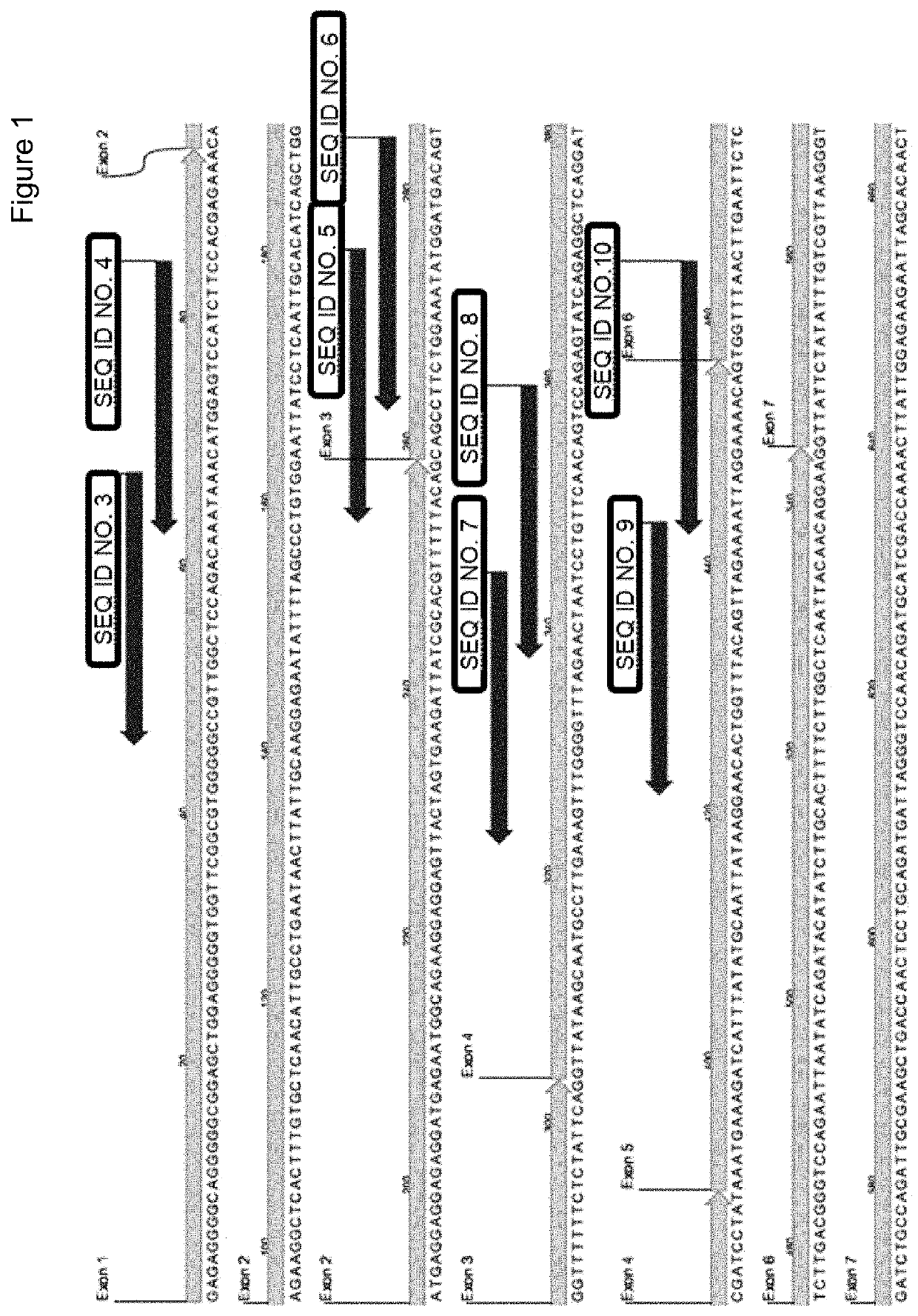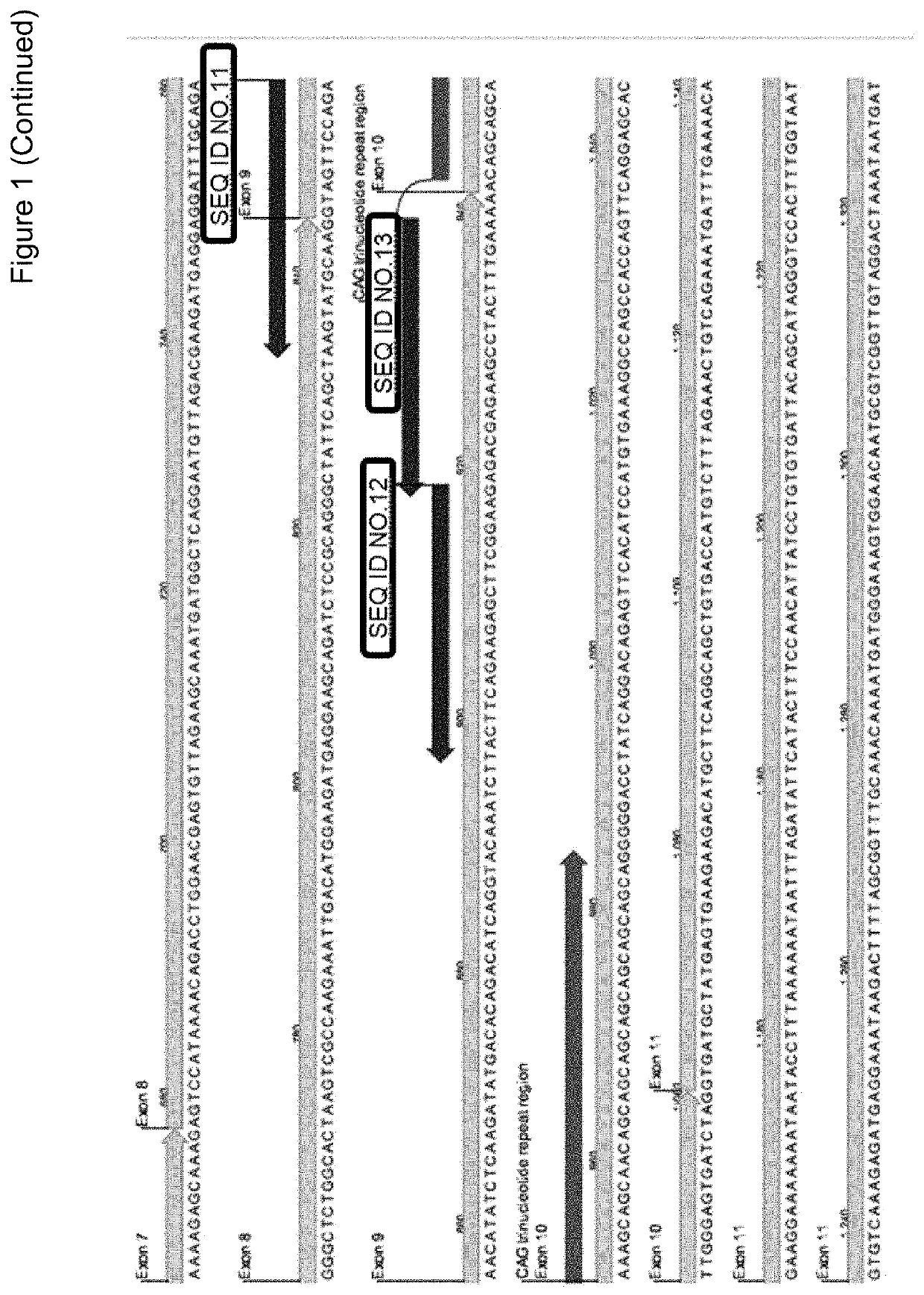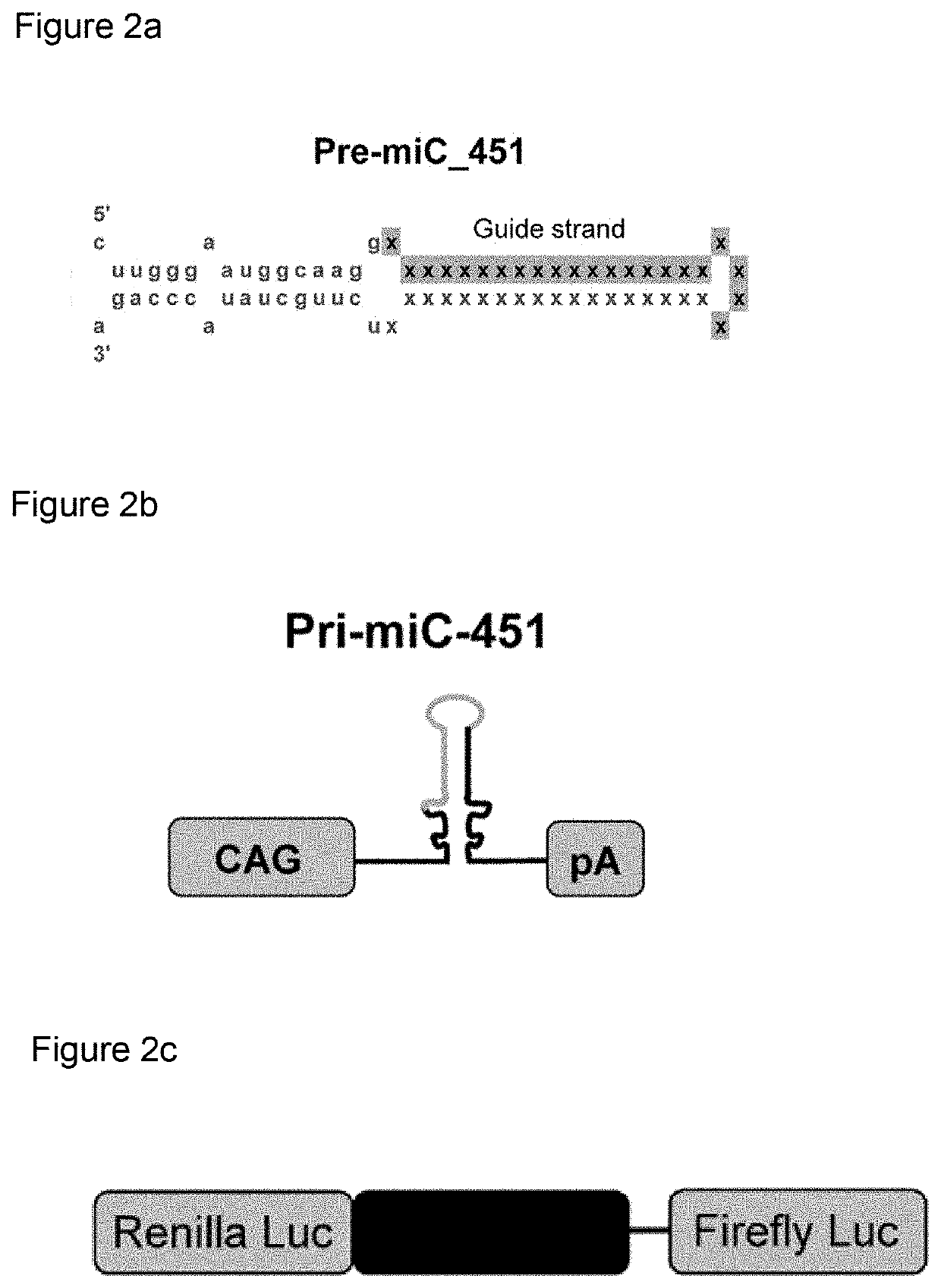Rnai induced reduction of ataxin-3 for the treatment of spinocerebellar ataxia type 3
a technology of ataxia and ataxia type 3, which is applied in the direction of viruses/bacteriophages, genetic material ingredients, drug compositions, etc., can solve the problems of reducing translation efficiency, cleaving the mrna, etc., and achieves the effect of reducing the expression of ataxin-3, and efficient knocking down of diseas
- Summary
- Abstract
- Description
- Claims
- Application Information
AI Technical Summary
Benefits of technology
Problems solved by technology
Method used
Image
Examples
examples
[0062]Design of miRNAs Targeting 5′ Region of ATXN3
[0063]We selected target sites for a total silencing approach (see FIG. 1). Selected target sequences are listed in table 1 above. First RNA sequences that were used to replace the endogenous guide strand sequence in the miRNA scaffolds were fully complementary to the target sequences of table 1, having standard Watson-Crick base pairing (G-C and A-U). Sequences were incorporated into human pri-miRNA miR-451 scaffold sequences. 200 nt 5′ and 3′ flanking regions were included and the mfold program (http: / / unafold.rna.albany.edu / ?q=mfold) was used with standard settings to determine whether the candidates are folded into the secondary structures as depicted in FIG. 8. If not folded into the predicted secondary structure, the sequence was adapted, which did not involve adapting the first RNA sequences, such that the correct structure was folded by the program. Complete scaffold encoding DNA sequences were subseqently ordered from GeneA...
PUM
| Property | Measurement | Unit |
|---|---|---|
| volume | aaaaa | aaaaa |
| volume | aaaaa | aaaaa |
| temperature | aaaaa | aaaaa |
Abstract
Description
Claims
Application Information
 Login to View More
Login to View More - R&D
- Intellectual Property
- Life Sciences
- Materials
- Tech Scout
- Unparalleled Data Quality
- Higher Quality Content
- 60% Fewer Hallucinations
Browse by: Latest US Patents, China's latest patents, Technical Efficacy Thesaurus, Application Domain, Technology Topic, Popular Technical Reports.
© 2025 PatSnap. All rights reserved.Legal|Privacy policy|Modern Slavery Act Transparency Statement|Sitemap|About US| Contact US: help@patsnap.com



